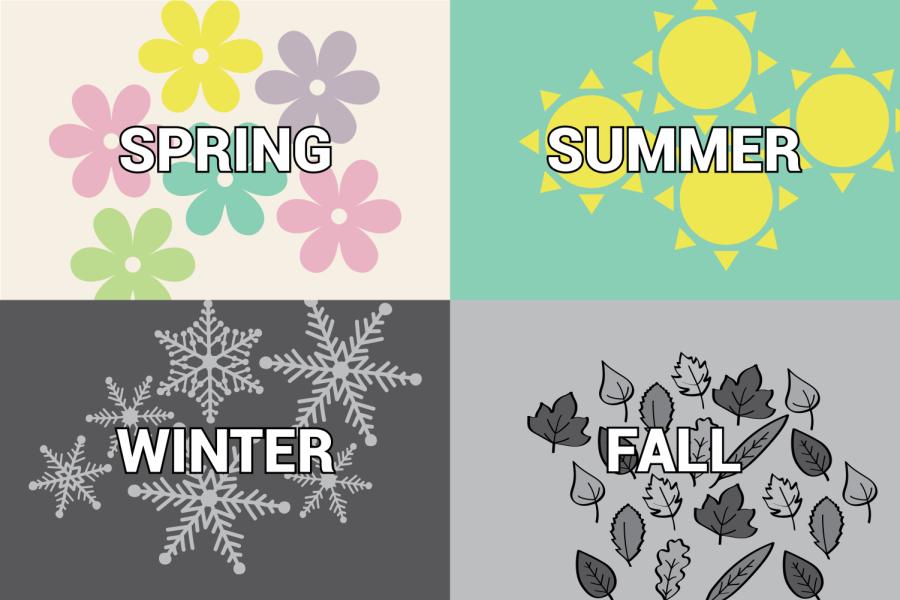The U.S. Senate unanimously passed the Sunshine Protection Act in March 2022. The bill would make daylight saving time permanent beginning in November. However, it was never voted on in the House.
The Minnesota Legislature has looked at passing its own similar legislation, like in 2021 when legislators passed a law to make daylight saving time permanent. However, this was contingent on Congress passing the Sunshine Protection Act because federal action is required by law before states can act on their own. If the feds want to try to pass it again this session, both the Senate and the House would have to take a new vote.
Without permanent daylight saving time, winter days end sooner, resulting in less sunlight exposure. For some, this can result in seasonal affective disorder, or seasonal depression, which is a type of depression related to seasonal changes, according to Mayo Clinic.
Fourth-year student Natalie Trupke said, referring to seasonal depression, that as the days get shorter and the weather gets colder, the thought of going outside becomes repulsive.
“When it gets to be winter time, and it’s cold out and there’s less vitamin D, you start to feel unwell,” Trupke said. “You start to feel a little sadder than you were when the sun was shining. I get seasonal depression every winter season; November through March is the worst.”
Trupke said it is essential to “keep a mental note that it is the weather, not you, that is the problem, and seasonal depression is a common, treatable and very real disorder.”
More serious than “just feeling down”
Seasonal depression is more than feeling down when the gloomy weather comes, according to Dr. Sabine Schmid, director of psychology education and assistant professor at the University in the Department of Psychiatry and Behavioral Sciences.
“Seasonal depression, seasonal affective disorder, is a type of depression with a yearly pattern … and is more serious than just feeling down,” Schmid said.
Schmid said seasonal depression is a medical condition with symptoms and may require medical attention.
Schmid said some symptoms of seasonal depression are similar to those of major depression, including trouble concentrating and initiating activities as well as deregulated sleep and eating.
“More typical symptoms of seasonal depression are feeling more sleepy and sluggish, social withdrawal and craving carbs, which can lead to weight gain,” Schmid said. “These symptoms of hibernation create a vicious cycle in which you don’t leave the house, exercise less, eat poorly, take in less sunlight, have less energy, sleep more and feel frustrated about yourself for not leaving the house.”
Schmid shed some light on what creates these side effects and the best ways to treat them.
“The most evidence for seasonal depression’s cause is the length of daylight being cut short,” Schmid said. “In Minnesota, we have seven hours less of daylight in the winter than in spring. The brain tends to send the wrong signals when it gets dark so early, creating an overproduction of melatonin, which is a hormone used to regulate the sleep cycle.”
Schmid said one common treatment for seasonal depression is antidepressants, prescribed by a therapist or primary care physician to help balance serotonin levels in the brain. Vitamin D supplements can also be helpful to replace the vitamin D lost from lack of sunlight.
Trupke said she takes vitamin D supplements and notices a difference during the winter months.
Schmid said another common way to treat seasonal depression is psychotherapy, a cognitive behavioral therapy that can help prepare for winter depression and address emotional symptoms.
Light therapy, or using sunlight lamps or bright-colored lights, is another effective tool to combat the winter blues, according to Schmid. She also advised lifestyle changes such as a regular bedtime routine and daily exercise.
“All of these things [and] having a strong routine can build your energy and create an upward cycle,” Schmid said.
Fourth-year student Molly Bowen said she has experienced seasonal depression because she enjoys spending time outside but cannot in the winter because the cold weather makes having enough energy to go outside difficult. To combat this, Bowen said she has her own coping mechanisms, like using a sunlight lamp, to stay positive during the colder months.
“I definitely have low energy and it is hard to stay motivated, to even get out of bed when the days are so short,” Bowen said. “It feels suffocating to be in one area for a long time when it is dark outside, so I try to get outside as much as possible while it is light out.”





















James
Nov 17, 2023 at 5:17 am
If you look at Minnesota started daylight savings time in 1966 from last Sunday in April to last Sunday in October. In 1987 switched from first Sunday in April to last Sunday in October. In 2007 yet another change from second Sunday in March to first Sunday in November. Many states including Minnesota have passed Sunshine Protection Act but needs congressional approval. US Senate passed it unanimously but getting it thru the house and getting it signed by the current president? This is not Canada. There any community, province or territory can do year round daylight time as standard time, do standard time year round or do USA clock changes. In Mexico they ended daylight time end of 2021 and went to year round standard time exceptions USA border cities and Baja California. Europe does daylight time from last Sunday in April to last Sunday in October. Australia does daylight savings time except Northern Territory, Queensland and Western Australia from first Sunday in October to first Sunday in April since southern hemisphere.
Nicole
Jan 27, 2023 at 3:26 pm
The “Sunshine Protection Act” is a lie. Changing our clocks does not change the amount of sunlight in winter. Scientists have a consensus that permanent Standard Time is healthier since we need sunlight in the morning for healthy circadian rhythms which also affects many chronic diseases. Daylight “Saving” Time makes us fat and sick. The only way to get longer winter days is to move closer to the equator.